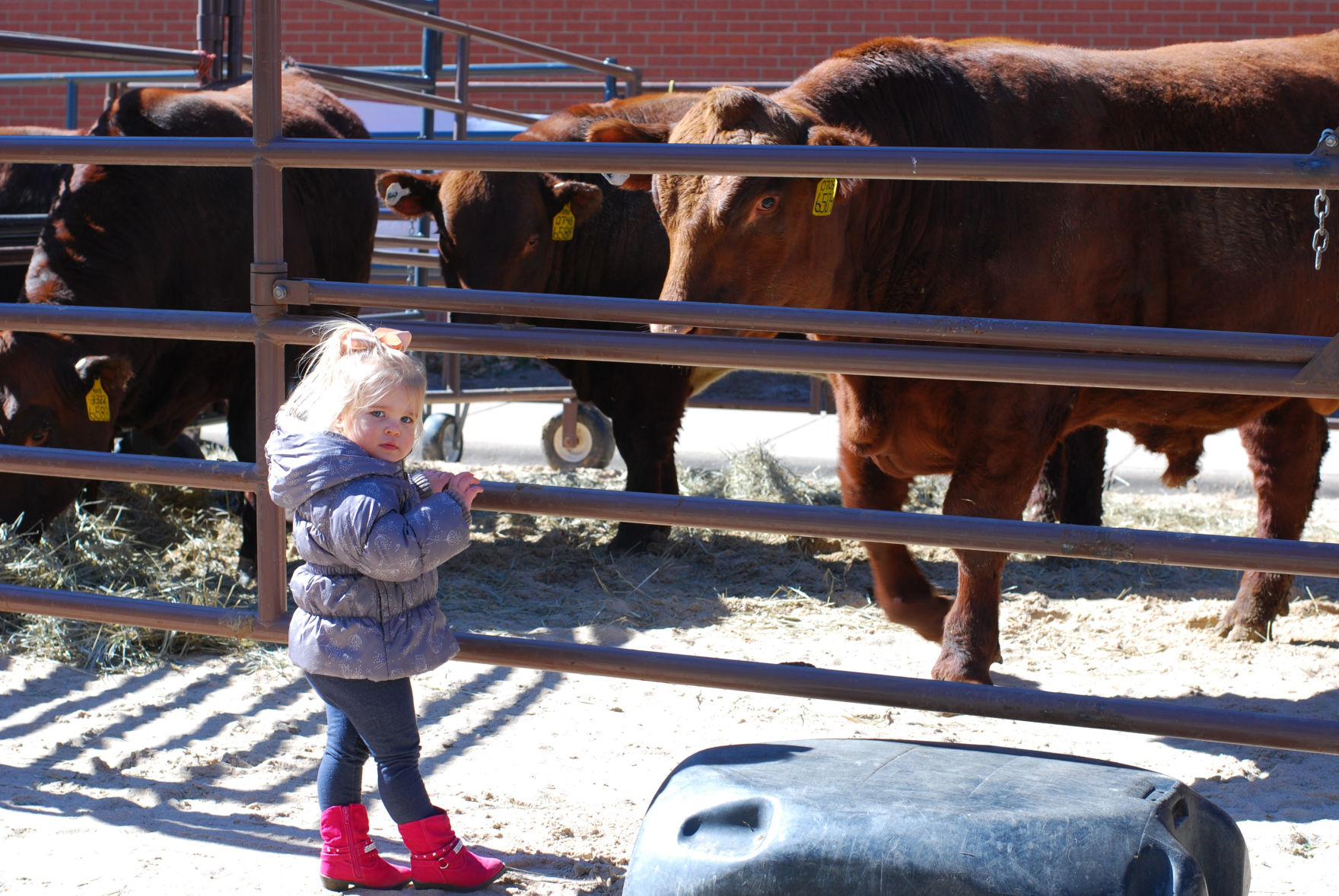It wasn’t the running of the bulls in Buhler, Kansas—although one did venture downtown when a gate wasn’t closed.
Pat Cramton coaxed the Simmental bull back into a trailer with a bucket of grain.
“He was about to get to the first shop when I got him,” the Pretty Prairie, Kansas, rancher said with a chuckle.
Her bull soon was safely back in his temporary pen—just in time for the opening ceremonies of the third annual Kansas Cattle Drive.
Cramton was among the two dozen or so seedstock producers who showcased their bulls and heifers on Main Street Buhler on Feb. 17. Temporary pens—more than 30 of them—stretched across about four city blocks. Meanwhile, equipment dealers showcased their wares, along with companies, artists and others.
It’s grown so big, in fact, that Darren Busick, Kansas State University’s agriculture agent for Reno County, had to turn away some producers.
“It’s just exploded,” he said, noting the economic impact the event has had on the Reno County town of 1,300 people. “We had 600 the first year, 2,200 last year and this year we are expecting 5,000 to 7,000 people total. It’s definitely grown.”
Grandin among the day’s events
The Kansas Cattle Drive has grown large enough to attract speakers like Temple Grandin, a renowned Colorado State University animal science professor. Grandin has autism and her experiences have helped her to understand animal behavior. She’s designed humane handling facilities for half of the cattle processing sites in the country.
She stressed good stockmanship.
“When I first started, one of the mistakes I made is I thought I could fix everything with equipment, Grandin said. “I can only fix half of the cattle with equipment. The other half is the management.”
Grandin noted the key to improving stockmanship is to be a good observer. Autism, she said helped her understand the animals she works with. She visualizes the world in pictures, which is similar to cattle.
“I would get down into the chutes and see what cattle were seeing,” she said. “Maybe a shadow, a coat on a fence, a chain hanging down—and I noticed that would stop the animals from moving through the facility.”
Bob Studebaker, who operates GoBob Pipe & Steel Sales in Mounds, Oklahoma, said he helped sponsor Grandin’s trip to Buhler. He’s connected with her not only through her cattle handling equipment ideas, but also because he is raising an autistic grandson.
“I’m a huge proponent of low-stress cattle management,” Studebaker said.
He added he appreciates the drive’s close-knit atmosphere.
It’s not as big as some events he goes to, he said, “But it is more personal.”
Cattle on Main Street
The event started in 2016 after Windom-area rancher Jeff Smith took an idea from his field man about a bull showcase in Valentine, Nebraska, Busick said.
“Heart City Bull Bash” always falls on a Saturday around Valentine’s Day, kicking off the town’s Valentine’s Day celebration. The town of 2,800 people closes off the downtown area and sets up portable pens for livestock.
Smith, along with Busick, thought the event would be good for small seedstock producers who sometimes have difficulty getting noticed.
“We wanted to showcase the guys who sell 10 to 15 bulls a year—a small amount,” Busick said.
It also helps larger producers promote their bull sales.
“If I’m a producer wanting to buy a bull, I can see both of them side by side,” he said.
That includes rancher Ryan Flaming. Flaming, also the Extension agent in Harvey County, said he brought bulls from his family’s Marion County ranch that he will sell at a bull sale March 10.
“This is a great way to advertise for the small guys,” Flaming said. “This gives the little guys a chance to advertise.”
Erik Steffens with E and S Cattle Cattle Co. in Lane County, Kansas, brought four registered Angus bulls. His wife, Katelyn, sat by their young son, Emerson, who was asleep in a stroller.
This is the second year they brought cattle to Buhler, Steffens said. He likes the family atmosphere.
“It’s a good day for us to come out and showcase our cattle,” he said, adding he has a production sale in December.
More importantly, his family can educate those removed from the farm.
“It is important for the younger generation who is disconnected from agriculture to see what we do, that we care about animals and we are here to do the best we can,” Steffens said.
Meanwhile, Pretty Prairie rancher Cramton sat in a lawn chair next to where her 11-year-old bull lay on sawdust shavings—seemingly trying to avoid the spectators, including a few who wanted to pet him.
Cramton brought the bull to show how good management and care has kept him in prime shape.
“He still breeds 80 cows a year,” said Cramton proudly.
But like the Steffens and most here, she didn’t come just to market her livestock, she said.
“I think people need to have the experience of being around livestock, to know we take care of them, we care about them and that we care for the people we are selling our product to.”
Amy Bickel can be reached at 620-860-9433 or [email protected].


